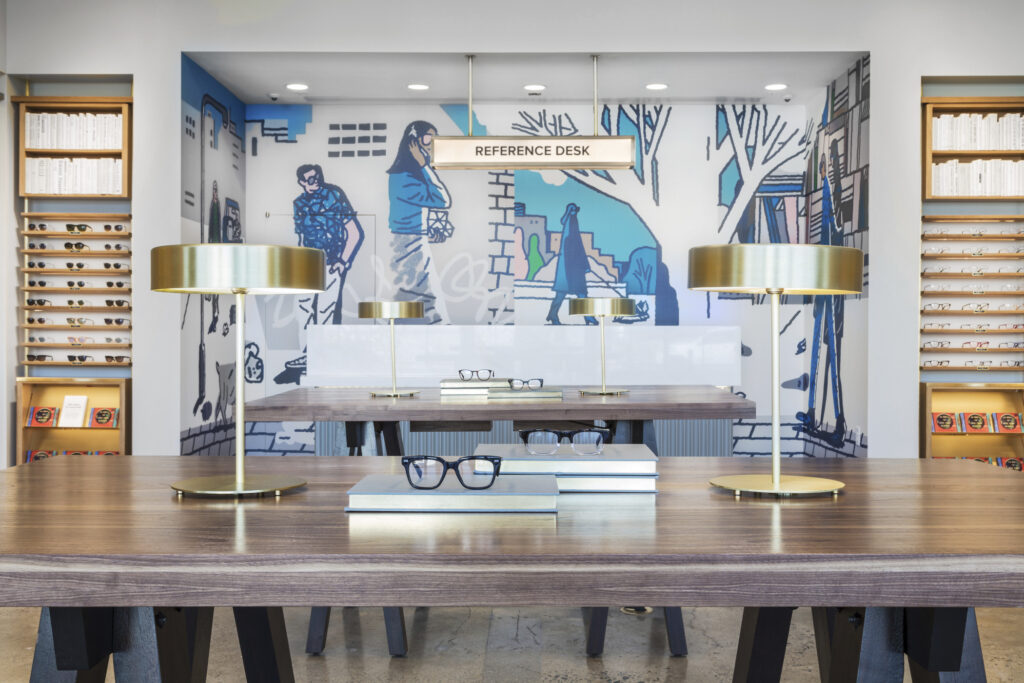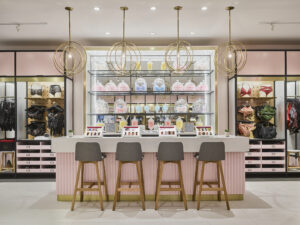Taking an online retail business into the brick-and-mortar world is a considerable step that comes with a great deal of strategy, planning, and preparation to achieve success. Despite the popularity and seeming prevalence of online shopping, more than 80 percent of retail sales occur in physical stores.
While most shoppers still prefer the in-person shopping experience, many devoted online shoppers still visit physical stores to see, test, or experience products before buying. When executed correctly, brick-and-mortar stores can serve as real-world extensions of the online brand. The best click-to-brick brands provide an experiential platform that integrates with architecture and a sales transaction environment while offering an opportunity to appeal to a new and diverse customer base.
With 56 percent of adult consumers preferring to shop both online and in-person and 91 percent of those consumers opting for brands that offer a seamless omnichannel experience, these well-executed click-to-brick concepts further strengthen the brand. Lawrence Group’s retail team has deep experience in successfully bringing the online retail experience to life in the brick-and-mortar world. Knowing where to start can be daunting.
“It’s creating a physical brand experience from a blank piece of paper. Most people who have never done this before have no idea what that means. We can be very helpful with setting up a road map for an emerging brick-and-mortar brand that is sensible and achievable,” says Tom Lekometros, Managing Principal of Lawrence Group’s New York office.
One of the earliest examples of this was Lawrence Group’s work with eyeglasses retailer Warby Parker, helping create location-specific custom spaces designed around the company’s core principle that buying glasses should be easy and fun. Each unique store is designed to evoke the culture and energy of its local environment while retaining national brand standards.
Lawrence Group’s success with Warby Parker inspired and opened the door for future collaborations with online retailers seeking a place in the brick-and-mortar world. One such retailer was a women’s intimate apparel brand, Adore Me. Launched in 2012, Adore Me was the first lingerie brand to offer extended sizing across a wide range of styles and categories, and it has since grown to offer its products in more than 67 sizes.

After building a strong customer base online, the Adore Me team approached Lawrence Group with the idea of becoming the Warby Parker of women’s intimates, starting from that blank piece of paper.
“A lot of what we did for Warby Parker was to infuse the store experience with what was prominent in the website that resonates with customers. Getting to that position requires a deep understanding of what their business is,” Lekometros says.
As an inclusive brand, customer demographics were key to taking Adore Me into the brick-and-mortar world. “It’s made for all people and their website does a very good job of showcasing that,” says Lekometros. “We had meetings that were conceptual – talking and hearing about who they are and why they’re important.”
As a tech-based retailer, Adore Me had demographic data on every single customer. This data helped the Lawrence Group retail team build profiles of their customers. In addition, the team visited competitive brick-and-mortar lingerie retailers to inform how they would set Adore Me apart in the marketplace.
“These are all contributing components to how we then start to build the design. We didn’t touch a piece of paper during that whole ramp-up process,” says Lekometros. “Then we slowly started to develop prototypical concepts about what the store experience would be, which was very much about storytelling.”
One of the cornerstones of the brick-and-mortar retail endeavor is about that first moment the customer experiences the brand.
“The moment you arrive or the moment before you arrive begins the interaction. In architecture, we consider the idea of the front door experience and what happens within the first three feet after you walk in the door as it relates to the brand,” Lekometros says.

The concept of a fashion runway and the idea of procession drove this for Adore Me’s stores. This gave the Lawrence Group team experiential cornerstones to build off of in order to determine the physical nature of the design. They then paired this with the customer profiles they developed to complete the picture.
“We can start to paint the story that we’re telling with colors and materials and lighting effects and display of products and all the things that go into what the store experience physically is for the customers,” says Lekometros.
Different concepts yielded different opportunities for how to display the product. The runway concept was linear by nature. Another concept was more of a fashion design studio, with the store as an open loft. For product display, Lawrence Group crafted the concept of a Lingerie Bar with iPad kiosks designed to transition from the online shopping experience people have at home on their couch or kitchen table into a public environment.

“It became a visual cornerstone in the overall retail experience, both from a brand moment point of view and logistically in the way people shop,” says Lekometros. “What they found early on is that a lot of their customers were shopping in the store, buying product and having it shipped to home so they weren’t burdened with carrying a bag around after they made their purchase. We crafted this idea that was more appropriate for that brand user who is an online shopper now brought into brick-and-mortar.”
For new customers more steeped in traditional retail transactions, the stores carry plenty of stock and SKUs and have staffed check out registers as well.
In terms of color, Adore Me wanted to take a feminine approach. Lawrence Group’s design includes white floors and white ceilings that create an airy vibe, accented with pink accent walls and pink cabinetry outlined in black. Large, front windows also framed in black, provide a glimpse of what lies inside before the customer passes through the doors.
“We set the table for them to launch this, and I think it was exactly what worked for them. It was buildable,” says Lekometros. “The clients that we work with are bespoke boutique disruptor brands who want to do things differently, and we are paddling in the same direction. They know that we bring value to what they are trying to achieve, so we get a lot of latitude in them and we enjoy the benefits of that kind of dynamic.”
